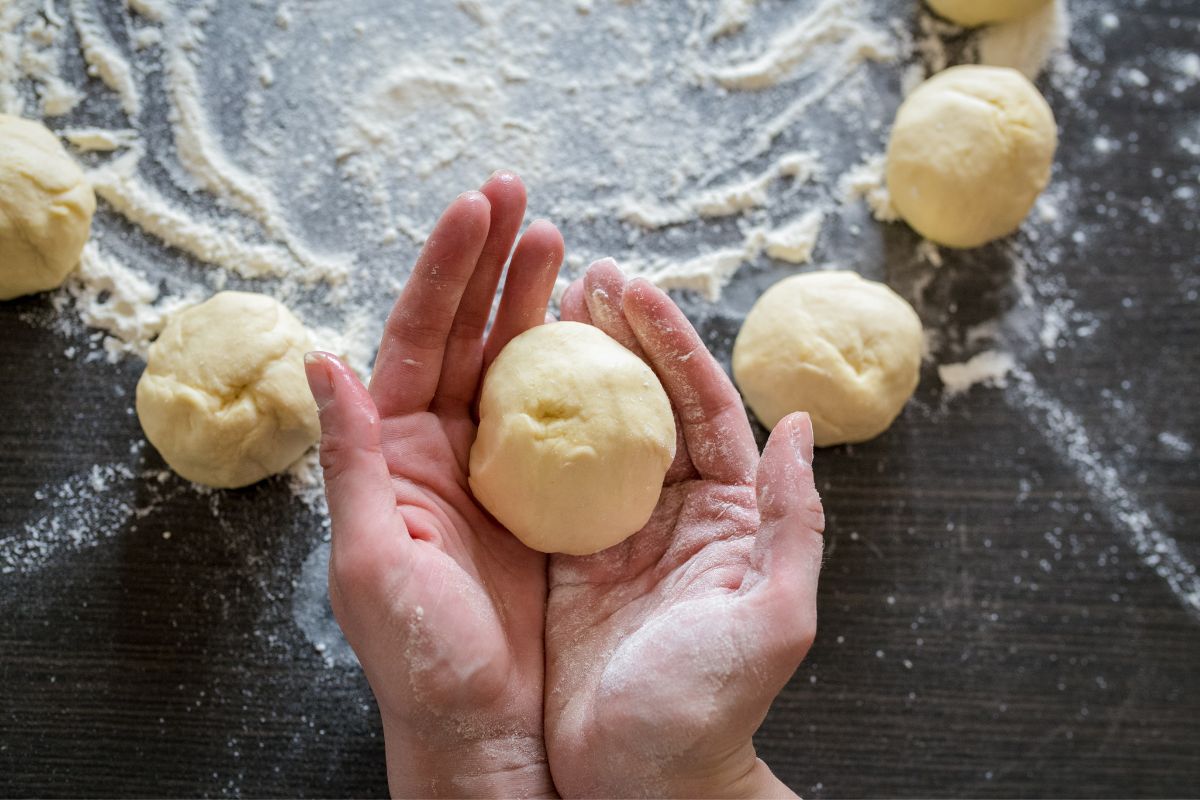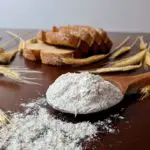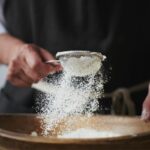All bakers have been there – you’ve gone to check on your dough only to find your dough didn’t rise.
It’s a massive disappointment when you’ve been waiting for your bread dough to expand and it just doesn’t happen. Luckily, there is no need to throw your unrisen dough away because there are actually plenty of things you can do with it!
It’s not really worth it to bake dough or bake bread that hasn’t risen, as it will be too dense to be appetizing.
But you can roll it out thinly and then bake your loaf of bread into a pizza, flat bread or homemade croutons. Or, you can dissolve some more active yeast in warm water in an attempt to make a second rise.
But before we get into what to do with unrisen dough, let’s take a look at why dough may not rise properly.
What Doesn’t My Dough Rise?
The best part about mistakes is how we learn from them – and baking bread is no exception!
Every mistake is a step to becoming better, so it’s important to persevere and not give up when baking goes ‘wrong.’ Let’s take a look at the most common reasons affecting your dough rise.
The Yeast Is Dead
When baking yeasted bread, you can’t do anything with expired or dead yeast, and when yeast is dead it’s impossible for your loaf of bread to rise. This is why fresh yeast is key.
It’s always a good idea to test your yeast in warm water before you add additional ingredients. You can test your yeast by mixing it into water with honey or sugar then wait about 10 minutes and keep an eye on any yeast activity.
If your dough rises and bubbles up, then your dough is good to go. If nothing happens, you should try a second rise or buy new yeast or add more yeast, such as active dry yeast.
Your yeast might die either due to age, or if the water was too hot. To ensure your yeast stays active and alive, your water should be about 100 °F .
Warm temperatures that are just right are crucial to any bread recipe, whether they be whole wheat or not.
The Dough Is Too Dry
The yeast will be unable to move freely if there is not enough water in the dough, and therefore your dough won’t rise.
When too much flour has been kneaded into the yeast it will be too dry. When you’re kneading your dough into some additional flour, then this is going to dry out the dough a little.
Volume measurements can also dry out dough. It’s very easy to use too much flour, so it’s a good idea to stick to weight measurements for the most reliable and consistent bake. It’s so important to keep dough moist.
Excessive Sugar And Salt
Sometimes, the key to dough rising isn’t about adding more yeast, more water, or extra flour but taking things away.
Sugar and salt can slow down yeast activity, which in turn slows down the rate at which your dough rises.
Bread that is made without sugar or salt would rise a lot faster but taste awful! It’s in bread recipes for a reason, after all!
To get successful, flavorful bread every time, you simply need to add enough sugar and salt to get a handle on how quickly the bread dough rises.
When you add too much sugar or too much salt, you’re not giving the salt, sugar, and yeast enough water, and the yeast will always lose out in this scenario.
Using too much of these ingredients will dry out your yeast cells significantly, and kill the yeast in the dough. If this happens, it’s hard for your dough to rise!
Volume measurements often kill the yeast or result in dry yeast, so to avoid dead or dry yeast you should weigh your ingredients.

What Should You Do With Dough That Hasn’t Risen?
While your dough may still be pretty flat, there are ways you can still use it.
If you bake it as it is, you’ll get a super dense slab of bread which won’t be pleasant to eat. So you’ll have to think outside the box and use it for something other than bread, such as pizza or flatbreads.
If your bread doesn’t rise, consider the below options before you throw it away.
Add Active Yeast
When your dough doesn’t grow larger, it may be because the yeast was of poor quality (or you used expired yeast) and was unable to produce a sufficient amount of gas for the bread to rise. In this case, grab some new yeast and add it to the dough.
First, get some warm water and add some of the new yeast to the dough. You can also add a touch of honey or sugar.
You should add just enough water to completely dissolve the yeast. We advise leaving the bread 10 minutes before checking if it’s active.
How do you tell if yeast is active? Well, it should bubble and rise to the surface of the dough. If this doesn’t happen, the yeast is not active.
When the yeast is active, pour it over the dough. So your kitchen isn’t a mess, make sure you do this in a bowl!
Next, work the yeast mixture and water into the dough by squeezing it all together in your hands.
It might be challenging to knead dough properly at first, but you should still be able to incorporate the liquid fully into the dough in about 5 minutes. All that effort is worth it for delicious, fresh bread!
If the dough is still wet, you can knead in more flour for a couple of minutes until it becomes malleable. With practice, the kneading process does get easier!
Now you can cover the dough and wait for it to rise until its size doubles.
Give Your Dough More Time To Rise
While it may appear that your dough hasn’t risen, it might just need a little more time.
Our kitchens are unique, so it’s not a bad thing if yours doesn’t rise in the time stated on the bread recipe. For example, the bread recipe may state to leave the dough rise for an hour, but in your kitchen it may take 2+ hours for your dough to rise properly.
You’ll get a better idea of the dough rising process with practice. If you’re new to making bread, then it’ll be difficult to tell when the dough has risen.
But with experience, you will get better at telling when the dough is ready, and more familiar with the rising process.
If you’re getting impatient waiting for your dough to rise and the yeast to activate, you can place the dough in warmer temperatures or a warm place to make it rise quicker.
You can also put your dough into the oven and just leave the light on. This is a great warm place to put your dough, as it should give your dough enough heat to activate the yeast and produce air bubbles quickly.
Final Thoughts
We hope our article has given you some insight into why your dough didn’t rise, and how simple it can be to fix dough that hasn’t risen. Next time this happens to you, don’t give up and throw your dough away!
Troubleshoot the issue, or turn your bread dough into a delicious pizza, flat bread, cinnamon rolls, or homemade croutons! Fixing dough is a lot better than wasting it.










